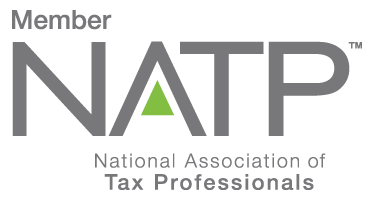Blog Archives
2010 Roth IRA Conversions
In this month’s newsletter, I want to take the opportunity to expand on my comments relating to Roth IRA conversions, which we briefly mentioned last month. It should be no surprise to anyone who has paid attention to federal tax policy over the past few years that the government is trying virtually any idea it can come up with to reheat the chilly economy. One such idea changes the rules relating to funding Roth IRAs, and comes in time to give taxpayers a great benefit as the year comes to a close.
For some time, one of the best retirement savings options has been the Roth IRA. However, as originally designed, it was off-limits to individuals with annual MAGI (modified adjusted gross income) of $120,000 or greater ($176,000 for married couples). Moreover, singles with MAGI of $100,000 or more, or married couples filing separately, were not even permitted to transfer funds from a traditional to a Roth IRA.
But starting in 2010, the rules restricting such transfers—commonly referred to as a Roth IRA conversion—were permanently eliminated. Higher income taxpayers are still not able to open new Roth IRAs, but since they can now convert a traditional IRA to a Roth, a backdoor way to accomplish the same thing is available to them, as long as they are willing to pay the income taxes due on the early distribution from their traditional IRA.
Why does that penalty have to be there? That’s a good question. The answer is found in the inherent difference between a Roth and the old-fashioned IRA. As originally designed, money a taxpayer uses to fund an ordinary IRA is not taxed, giving them an immediate as well as a long-term incentive to save. Instead, the money is taxed when the savings are withdrawn, whether that withdrawal comes prematurely or at retirement.
On the other hand, a Roth IRA is funded with money that has already been taxed, which then is allowed to not only grow tax free until retirement, but is also not taxed even when withdrawn, as long as the rules regarding minimum holding periods are met.
This can create a terrific wealth-building opportunity, particularly for people who still have a long investment horizon. But to be allowed to invest tax-free in a traditional IRA, and then convert to a Roth IRA where that investment can also grow and eventually be withdrawn tax-free, is an unfair advantage. It would mean that a substantial portion of ordinary income would never be taxed, something that is contrary to the tax code and not in the best interest of the country.
So that is why a withdrawal from a traditional IRA has to be taxed, even if it is only being transferred to a Roth IRA. But, there is more good news for taxpayers in 2010. If they convert their traditional IRA to a Roth, Uncle Sam will give them the option of reporting the full amount of the transfer on their 2010 return, or dividing it between their 2011 and 2012 returns, theoretically making the tax liability more manageable.
You should definitely consult with your investment advisor if you think you might benefit from a Roth IRA conversion. I am not an expert on such matters! But as a tax guy, it is my job to help you file the most advantageous tax return that is legally and ethically possible. You only have until December 31 to act, but I know a good tax deal when I see one!









